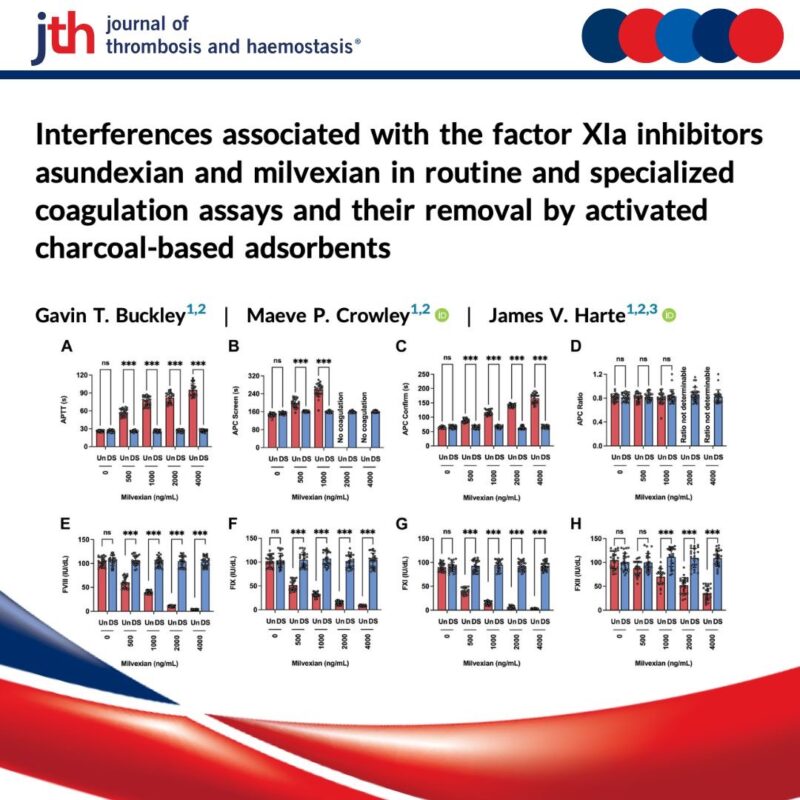
James Harte on Asundexian and Milvexian’s Strong, Dose-dependent Interferences in Coagulation Assays
James Harte, Assistant Lecturer/PhD Candidate on the School of Biochemistry and Cell Biology at University College Cork, proudly reposted from JTH Journal on LinkedIn:
”Delighted to see our work on the laboratory testing of asundexian, milvexian, from the EOLAS Research Group, shared by the Journal of Thrombosis and Haemostasis (JTH).”
JTH Journal shared on LinkedIn:
”Interferences associated with the factor XIa inhibitors asundexian and milvexian in routine and specialized coagulation assays and their removal by activated charcoal-based adsorbents.
This study shows that the emerging FXIa inhibitors asundexian and milvexian produce strong, dose-dependent interferences in coagulation assays — potentially leading to misinterpretation of hemostatic function.
Importantly, activated charcoal–based adsorbents (including DOAC-Stop) effectively removed these interferences, enabling accurate coagulation testing in treated plasma.”
Read the full paper here.
Article: Interferences associated with the factor XIa inhibitors asundexian and milvexian in routine and specialized coagulation assays and their removal by activated charcoal-based adsorbents
Authors: Gavin Buckley, Maeve Crowley, James Harte

Stay updated on all science in the field of coagulation disorders with Hemostasis Today.
-
Nov 27, 2025, 16:00Nathan Connell on WFH AI Summaries from the Global Forum
-
Nov 27, 2025, 15:49Piotr Czempik: Rethinking Coagulation in Acute Liver Dysfunction
-
Nov 27, 2025, 15:35Overwhelmed? A Leader’s Guide from Mark Crowther to Getting Back on Track
-
Nov 27, 2025, 15:10Wolfgang Miesbach’s Top 10 Picks for TTP and Thrombosis from ASH 2025
-
Nov 27, 2025, 14:24ICCBBA’s Executive Director Eoin McGrath Chairs a Dynamic Session on AI, Innovation and Informatics in Transfusion Medicine
-
Nov 27, 2025, 13:26Wolfgang Miesbach’s Top 10 Picks for Bleeding Disorders from ASH 2025
-
Nov 27, 2025, 11:19Priya Prasad Presents a Case of Severe Hypotensive Transfusion Reaction
-
Nov 27, 2025, 04:07Eugene Tang Presents Highlights from UK Stroke Forum 2025
-
Nov 27, 2025, 03:47Michael Makris: I Believe the Time Has Come to Consider Emicizumab Up Front in Persons with Acquired Hemophilia
